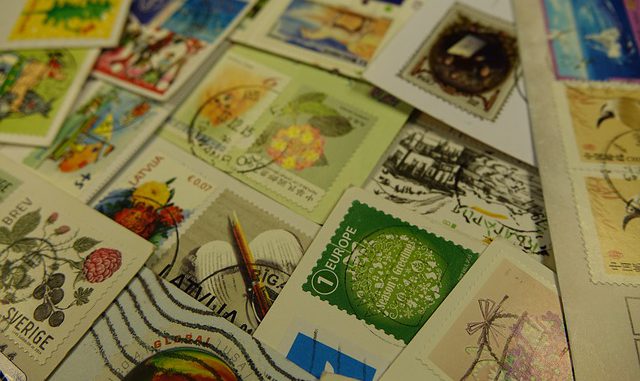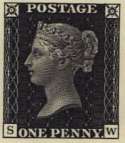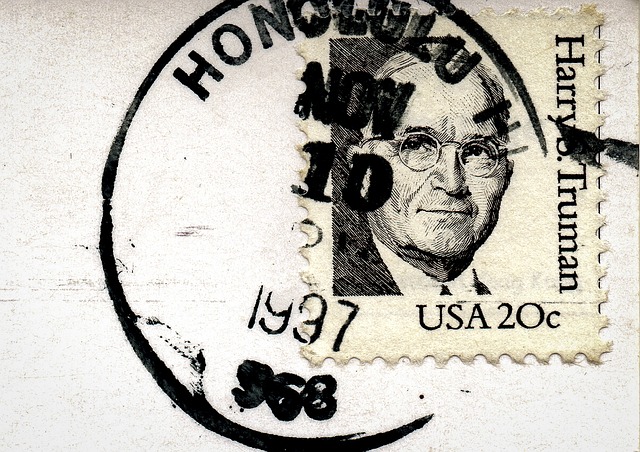
By Victor Epand
Before the stamp was invented the receiver of a letter paid the postage instead of the sender, which the receiver sometimes refused to pay or accept the letter. However, sometimes the sender would just place a secret message on the letter and when ever the receiver viewed the message he did not need pay for the letter.
The very first postage stamp ever issued was the 1 Penny Black, which was issued by Britain on May 6th of 1840 and pictured the young Queen Victoria. These first stamps were produced and designed by an English schoolmaster by the name of Rowland Hill in 1837. For his act of producing the first stamp was rewarded by him being knighted. These stamps were rated by weight instead of by size, which was three-quarters by seven-eighths, were issued as prepayment for possible postage mail. These first stamps were produced in only black ink.
 In fact, the profile of Queen Victoria remained on the British stamps for sixty years until the year 1900. These original stamps had to be cut from the sheet it was produced on by scissors, because they did not have perforations. Unused 1 Penny Black stamps are quite rare, but they are still in existence today. Two days after the release of the Penny Black on May 8th of 1840 the 2 Pence Blue was released, which used blue dies, but was eventually placed into cancellation.
In fact, the profile of Queen Victoria remained on the British stamps for sixty years until the year 1900. These original stamps had to be cut from the sheet it was produced on by scissors, because they did not have perforations. Unused 1 Penny Black stamps are quite rare, but they are still in existence today. Two days after the release of the Penny Black on May 8th of 1840 the 2 Pence Blue was released, which used blue dies, but was eventually placed into cancellation.
The popularity of this brand new system of sending mail and collecting a fee in advance spread quickly and other countries soon began using similar systems. Brazil was the next country to get into the process of using stamps when it issued the Ox Eye on July 1st in 1843. During that same year Switzerland issued the Canton Zurich on August 1st, which had its digit on the back and the Canton Geneve on September 30th, which was called the Doppelgenf and featured a coat of arms. They followed their stamping designs again in 1845 with their release of the Canton Basel on July 1st entitled, Basler Tauchen.
The first United States stamp were issued on July 1st of 1847 and featured a George Washington ten cent stamp and a Benjamin Franklin five cent stamp. On September 21st of that year the Blue and Orange Mauritus featuring Queen Victoria was released by Mauritius. Bermuda followed up during 1848 with the Bermuda 1 Penny. During the year of 1849 three other stamps were issued. The first was issued on the first of January from France called the Head of Ceres, the second was released on the first of July entitled Leopold I from Belgium, and the last stamp released that year was from Bavaria on the first of November entitled Schwarzer Einser, which was the first German stamp issued.

During 1850, Spain released their Queen Isabella II stamp on the first of January. Also during that same year New South Wales issued a stamp on the tenth of January called Sydney and Imigrants, and Victoria issued a stamp of Queen Victoria sitting on the fifteenth of January. On the fourth of April, Switzerland issued a stamp of coat of arms, Austria issued their coat of arms stamp on the first of June, and Saxony issued the Sachsen-Dreier on the first of July, plus on that same day the British Guayana stamp featuring the name of the postmaster in a circle.
The first pre-stamped envelopes were sold in 1852 and during 1855 a prepayment of postage began being required in the United States. In 1857, the very first perforated stamps appeared in the United States and almost all countries have started using postage stamps by 1860. During the year of 1869 the first picture stamps showing something other than dead people appeared on the first of January. Pre-stamped postcards, which could be purchased for one cent, were issued in 1871.
The Colonial Government of Gibraltar assumed control of Postal Services of Bermuda on the first of January on 1886 when their plates were overprinted using a variety of colors. During December of that same year Gibraltar began replacing the design with his own and then his stamps were used with peseta values from 1889 to 1898.
The very first commemorate stamps from the United States were issued in 1893, which show scenes of the voyage to America by Columbus. Then during 1896 rural free delivery began, which brought mail directly to individuals homes ending out the century.
Victor Epand is an expert consultant about rare coins, stamp collections, and rare collectibles. Follow these links to find the best marketplace for: collections [http://www.rarecoinsell.com], history [http://www.sellstampcollections.com].
Article Source: The Early History of Stamps








